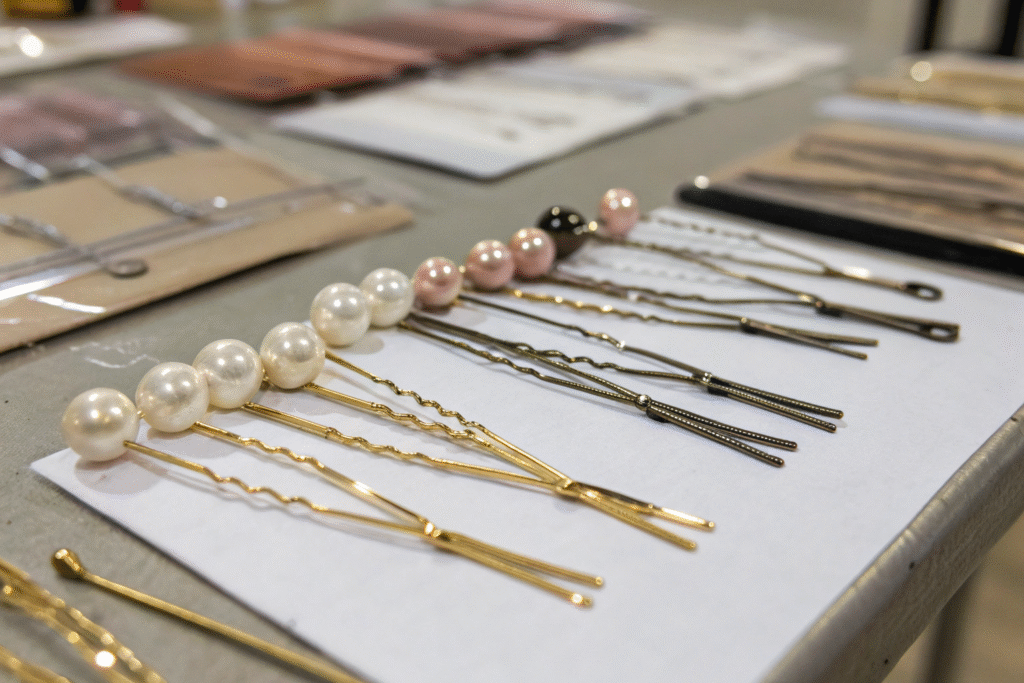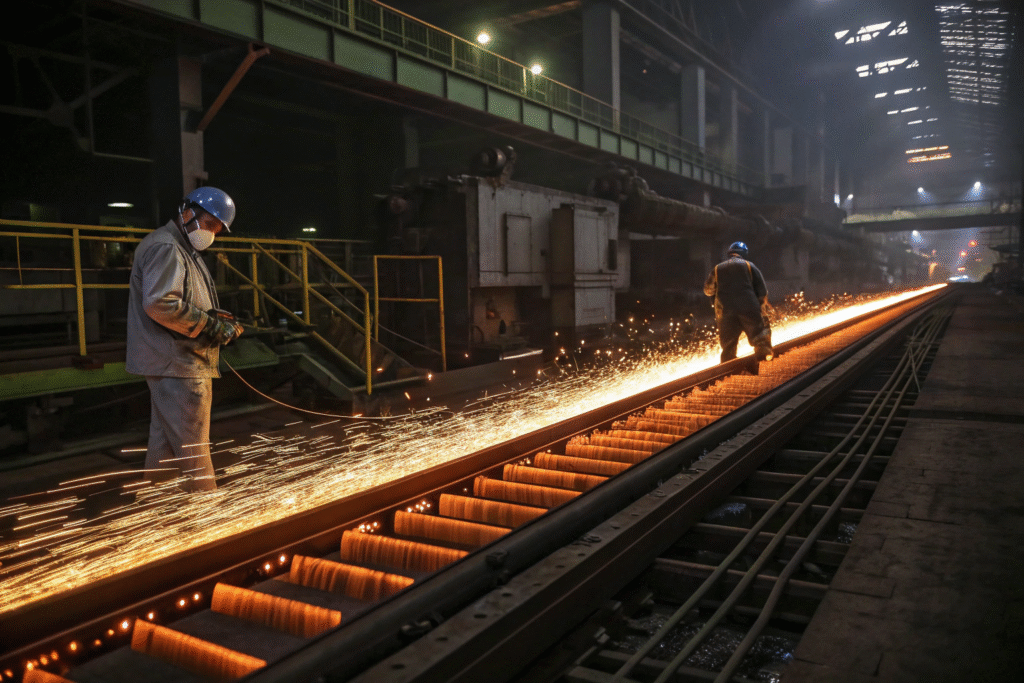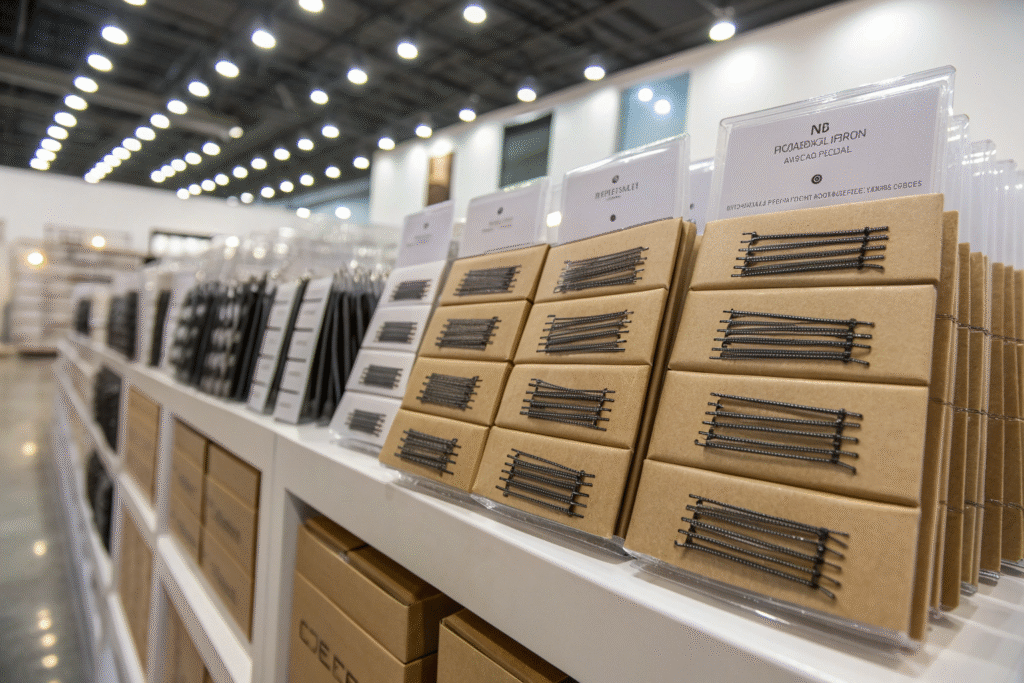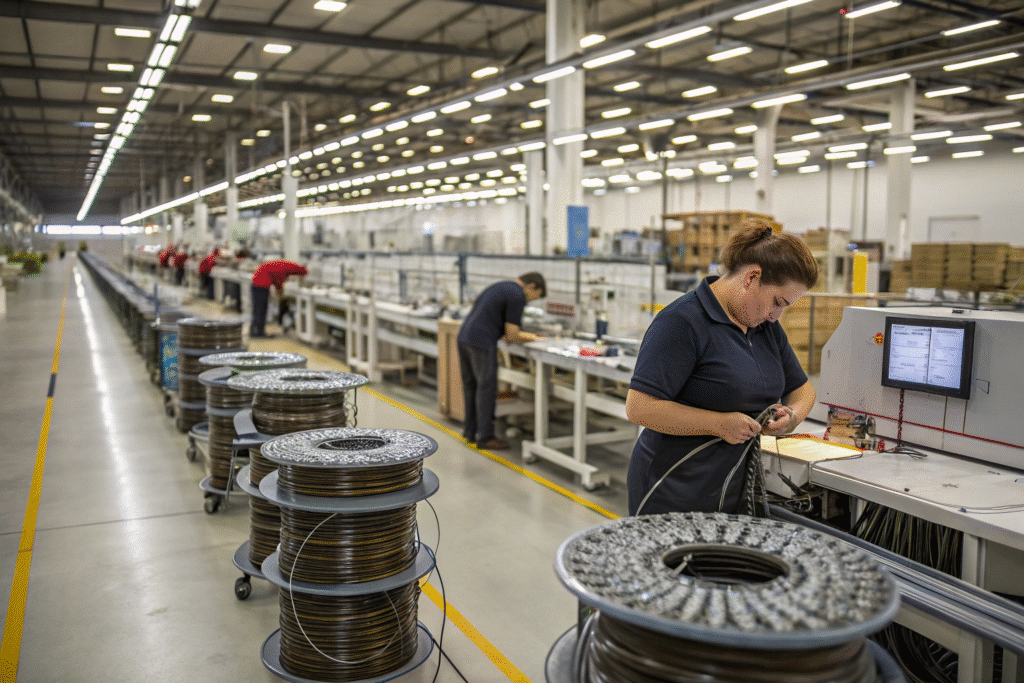When people think about hair accessories, they usually imagine beauty, style, or convenience. But for wholesalers and professional buyers, the most important question is whether the products last long enough to keep customers satisfied. A bobby pin that loses its spring after a few uses can frustrate end users, damage brand reputation, and reduce repeat sales.
Factories ensure bobby pin spring durability by selecting the right materials, using professional heat treatment processes, applying advanced coatings, and running strict quality control tests. These steps are what make the difference between a cheap pin that breaks easily and a professional-grade product that supports hairstyles all day.
At HairAcc, we are proud to supply bobby pins and other hair accessories to buyers in the US, Europe, and Russia, where quality standards are very high. Let’s explore how factories like ours ensure durability step by step.
What Materials Make Bobby Pins Long-Lasting?
Raw materials decide the base quality of any hair accessory. Factories cannot fix weak steel with later processes.
High-carbon steel wire is the most widely used material because of its natural springiness. Some premium suppliers use stainless steel to prevent rust, especially for humid or coastal markets. Surface coatings like nickel plating, epoxy, or paint finishes give extra protection and create the smooth surface that slides easily into hair.

Why is steel the preferred choice?
Steel balances strength and flexibility. Without enough carbon, the wire bends too easily. Too much carbon makes it brittle. According to ASM International, proper steel composition guarantees the pin can be bent open and closed thousands of times without breaking.
Do coatings improve durability?
Yes. Coatings protect against rust and friction. For example, the European Coatings Journal shows that epoxy coatings reduce micro-cracks, making pins smoother and more resistant to wear. Factories adjust coatings based on the buyer’s market: glossy black for Western mass retail, or gold-toned for premium fashion brands.
How Does Heat Treatment Improve Spring Strength?
Material alone is not enough. To transform steel into a reliable bobby pin, factories run it through heat treatment.
The wire is first heated to a high temperature, then cooled rapidly in oil or water (quenching). After that, it is reheated at a lower temperature (tempering). This process strengthens the steel’s molecular structure, making it elastic but not brittle.

What role does quenching play?
Quenching increases hardness. As ScienceDirect explains, rapid cooling prevents the steel from softening under stress. Without quenching, the pin loses tension quickly.
Why is tempering important?
Tempering reduces brittleness caused by quenching. A pin that is too hard will snap when bent. Tempering ensures balance between flexibility and strength. This balance is why high-quality pins from professional factories last much longer than cheap bulk alternatives.
How Do Factories Test Bobby Pin Durability?
Every bobby pin goes through multiple rounds of testing before being packed.
One key test is the fatigue test, where machines repeatedly open and close the pins thousands of times to see if the spring holds tension. Factories also run salt spray tests to simulate humid environments and check corrosion resistance.

How do fatigue tests work?
Automated machines simulate real-life use. ASTM International notes that fatigue testing can simulate months of use in hours. If a pin survives thousands of cycles, it is approved for export.
Why is salt spray testing critical?
For export markets like the US and Southeast Asia, corrosion can be a major risk. Intertek explains that salt spray chambers mimic tough conditions like humidity, sweat, and shipping environments to guarantee that coatings protect pins for months in storage.
How Does Packaging and Shipping Protect Durability?
Even the strongest pins can bend during transport. That’s why factories also design packaging for protection.
Pins are usually attached to cardboard backing cards and sealed in plastic blisters or boxed for shipping. Buyers often request custom packaging for branding and safety. Shipping teams use moisture-control packs inside cartons to protect against rust during long sea journeys.

Can packaging really improve product life?
Yes. According to Packaging Strategies, good packaging can cut damage rates by 40%. For small accessories like bobby pins, preventing bending during shipment ensures customers receive a product that works perfectly.
How do logistics affect quality?
Shipping conditions are unpredictable. Containers often face humidity changes that can weaken coatings. Professional suppliers work with certified logistics providers and add desiccant packs to protect products until they reach buyers.
Conclusion
Factories ensure bobby pin spring durability by combining the right materials, professional heat treatment, strict testing, and protective packaging. This careful process guarantees that even the smallest accessory performs reliably for consumers worldwide.
At HairAcc (Shanghai Fumao), we understand that your brand reputation depends on quality. That’s why we supply bobby pins, hair clips, headbands, and more with consistent durability and fast global shipping. If you want to develop your own line of head accessories, please contact our Business Director Elaine at elaine@fumaoclothing.com. We look forward to helping you build your brand with reliable products.









